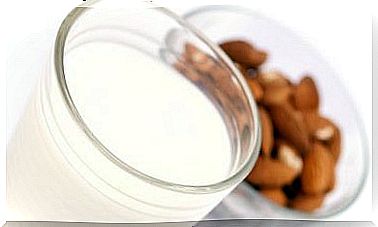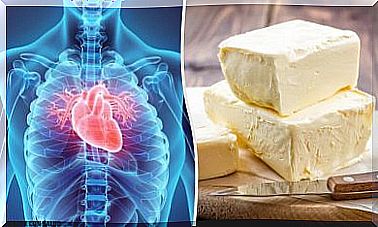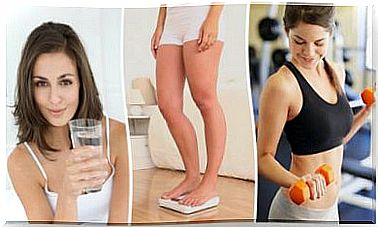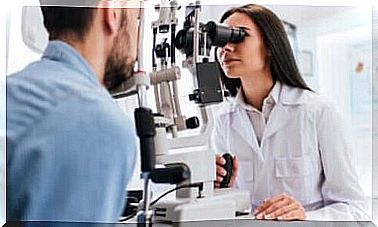5 Things You Can Do To Prevent Thrombosis
To avoid thrombosis, it is essential to exercise frequently as much as possible. You only need to walk for 30 minutes a day to get the benefits.
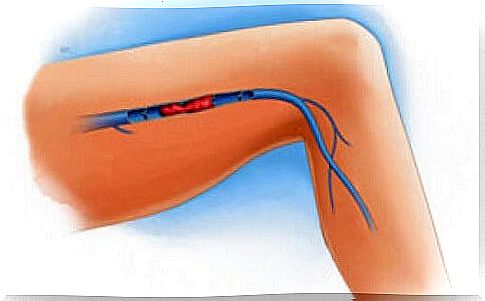
Deep vein thrombosis is a pathology of the circulatory system. It occurs when a vein or artery becomes blocked due to the formation of a thrombus, which is made up of cells and clotted blood.
This causes chronic inflammation of the intestinal walls. It will therefore prevent the proper passage of blood and trigger other symptoms that affect the quality of life.
In most cases, it occurs at the inner extremities, the same that develop the dreaded varicose veins.
Their appearance is related to a decrease in the speed of blood circulation, an increase in the density of the blood, and also alterations in the quality of the veins.
In rare cases, the condition turns into an embolism, when the clot peels off and goes into the blood stream. It can then get caught in the brain, lungs and other vital organs, causing serious damage.
Although in many cases, thrombosis is linked to genetic factors, it has been verified that lifestyle habits and even old age could favor the development of this pathology.
Thus, it is important to be aware of it and adopt habits that reduce the risks.
Here we are going to share with you 5 things we can all do to prevent the development of this dangerous disease.
1. Exercise to avoid thrombosis
This healthy habit helps keep your weight stable. It also has incredible benefits on the cardiovascular and circulatory system.
Low impact activities like walking or swimming are great for maintaining good blood circulation.
Spending 30 minutes each day for physical training will prevent the formation of thrombi and varicose veins.
2. Stop smoking
The harmful effects of tobacco have a direct impact on the respiratory system. This has serious consequences for vital organs.
These toxic chemicals build up in the bloodstream, reducing oxygen and making the blood thicker.
Over time, clots form and block the arteries, causing thrombosis.
Stopping this habit is essential for enjoying good circulatory and heart health. Although the effects are not immediate, they do happen gradually.
3. Have a suitable weight
People who are overweight have a higher risk of developing thrombosis because of the strain on the veins in the legs.
This condition increases the risk of suffering from heart disease and significantly decreases the quality of life.
In addition, obesity leads to an imbalance in the levels of cholesterol and triglycerides, two lipids that can cause arterial obstruction.
The best way to achieve a healthy, balanced weight is to follow a balanced diet. It should therefore be low in calories and supported with daily exercise.
4. Avoid sitting for too long
Sitting for a long time is a factor that also increases the chances of blood circulation problems.
Lack of movement in the legs for many hours promotes the onset of fluid retention and makes blood circulation difficult.
If, due to school, work or training, you have no choice and must remain seated, your best bet is to do several stretching sessions during the day.
Walking around the house or office for a few minutes, raising your legs for a few moments, or walking up and down stairs are all very effective ways of boosting the circulatory system.
Thus, it is essential to avoid crossing your legs for a long time. Although it has not been scientifically proven, it is believed that this habit is related to blockage of blood in the legs.
5. Adopt a good diet
The nutrients given to the body through food are essential to prevent the formation of thrombi and also varicose veins.
Consuming foods rich in vitamin C, for example, increases the production of collagen and elastin. These are two substances that help maintain the elasticity of the artery walls.
You should also include more vitamin E. This is an antioxidant substance that prevents the oxidation of cholesterol to prevent clotting.
You should also not forget a good dose of vitamin K, essential for reducing the activity of a matrix protein called Gla, which in turn is linked to varicose veins and thrombosis.
Here are some of the recommended foods:
- Orange
- Mandarin
- Grapefruit
- Kiwi
- Mango
- Broccoli
- The strawberries
- The almonds
- Lawyer
- Wheat germ
It is very important to listen to all of these recommendations. Indeed, we are all exposed to this condition, especially at certain stages of our life.
